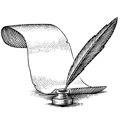 Mitigating Herbicide Damage to Specialty Crops: Pesticide Tank Cleaning Notes and Procedures
Mitigating Herbicide Damage to Specialty Crops: Pesticide Tank Cleaning Notes and Procedures
William Waltman, Maria Bampasidou, Ronald Strahan, Kathryn Fontenot, and Alessandro Holzapfel ( July, 2024 )
Summary
Cleaning a sprayer in between uses is very important when farming vegetable crops. Pesticides include insecticides, fungicides, bactericides and herbicides. In many cases, producers may combine several pesticides in a tank and spray at one time. But this is often not the case with herbicides. Optimally, growers will use separate tanks: one for fungicides, bactericides and insecticides and another for herbicides. Even with separate tanks, cleaning between uses is imperative. There are four major categories of herbicides: preemergent (used before weeds emerge), postemergent (used after weeds have sprouted in the field), selective (kills only particular crops), and nonselective (kills all crops). A grower increases their odds of devastation especially when spraying a nonselective herbicide followed by a selective herbicide if proper cleaning between uses does not occur. Even when herbicides are used according to the label, Louisiana vegetable producers can grow over 40 types of crops, and not all crops can be sprayed with the same pesticides. Cleaning the tanks prevents self-caused damage to crops.
Details
| Publisher | LSU AgCenter |
| Publication Date | July, 2024 |
| Publication Views | 28 |
| Material Type | Written Material |